VERS UNE MEMOIRE QUANTIQUE AVEC DES IONS PIEGES
VERS UNE MEMOIRE QUANTIQUE AVEC DES IONS PIEGES
VERS UNE MEMOIRE QUANTIQUE AVEC DES IONS PIEGES
You also want an ePaper? Increase the reach of your titles
YUMPU automatically turns print PDFs into web optimized ePapers that Google loves.
tel-00430795, version 1 - 9 Nov 2009<br />
5.1. REPRODUCTION DE L’ARTICLE 121<br />
4 S. Removille et al.<br />
Fig. 4 Comparison of mass spectra of the trapped ions<br />
produced either by electron-beam or by photoionisation for<br />
Vrf = 500 V. The two main peaks associated with Sr + are<br />
observed for a tickle frequency of 2νR and νR (negative peaks<br />
in the mass spectrum). The two experiments are carriedout<br />
such as the initially trapped ion numbers are identical.<br />
The dark count falls to zero since the probability for an untrapped<br />
spurious ion to reach the detector during the integration<br />
time is negligible.<br />
Photoionization rate (s -1 )<br />
8<br />
6<br />
4<br />
2<br />
0<br />
Photoionisation rate<br />
Square law<br />
0 2 4 6 8 10 12<br />
Power (mW)<br />
Fig. 5 Photoionisation rate as function of the average power<br />
of the ionisation beam obtained for Vrf = 130 V and Vec =<br />
500 V. An excellent quadratic law is observed, as expected<br />
for a two-photon absorption process.<br />
for each atom crossing the interaction region is on the<br />
order of unity. The intensity range in which this saturation<br />
occurs depends on both the two-photon ionisation<br />
cross section σtp for the (5s 2 ) 0 S0 → (4d 2 +5p 2 ) 1 D2 transition<br />
and the photoionising pulse duration. A rough estimate<br />
(i.e. that does not take into account the spectrum<br />
of the femtosecond pulses) [29] gives σtp 10 4 GM (1<br />
GM = 10 −50 cm 4 s). By considering a thermal velocity<br />
of 200 m/s, an atom interacts with 10 laser pulses in<br />
the interaction region and the saturating peak intensity<br />
is on the order of 100 GW/cm 2 . In this high-intensity<br />
regime, we expect the loading rate to be limited by the<br />
density of Sr atoms.<br />
In a second experiment, we compared the loading<br />
times and the maximum number of trapped ions in the<br />
two cases of EB and TPPI. The experiment is performed<br />
as follows: we turn-on the electron gun or the photoionising<br />
beam at time t = 0 ; after a certain time τ, we<br />
turn off the laser cooling and eject the loaded ions towards<br />
the ion counter. Laser cooling is stopped in the<br />
ejection phase to avoid spurious losses induced by damping.<br />
We show in Figure 6a the number of trapped ions,<br />
Number of ions<br />
10 4<br />
10 3<br />
10 2<br />
Photoionisation<br />
0 400 800 1200<br />
Loading Time (s)<br />
V rf<br />
125V<br />
95V<br />
160V<br />
195V<br />
e-beam ionisation<br />
V rf =500V<br />
Fig. 6 a) Number of trapped ions as function of the loading<br />
time. In the case of photoionisation, the curves corresponding<br />
to several Vrf are traced. b) Mass spectra of the trapped<br />
ions produced either by electron-beam (solid curve) or by<br />
photoionisation (dashed curve) for Vrf = 350 V. All the data<br />
are obtained for Vec = 500 V.<br />
as function of τ, obtained using the two techniques. In<br />
both cases, saturation in the number of trapped ions<br />
is reached within a few tens of seconds. However, only<br />
TPPI allowed us to create pure Sr + clouds containing a<br />
large number of ions: the EB technique saturates around


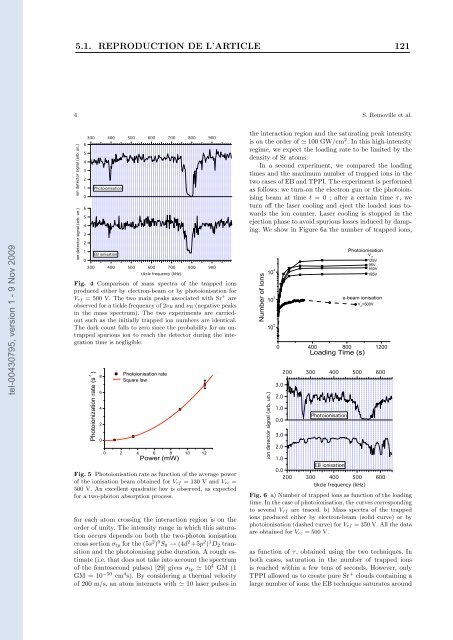

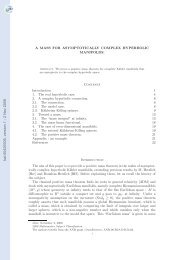
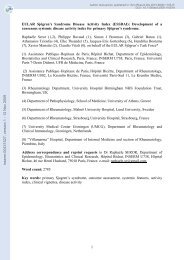
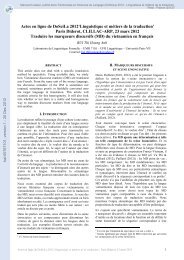
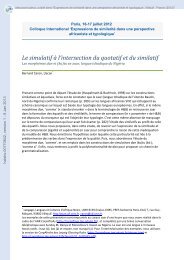
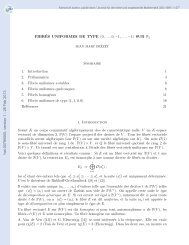
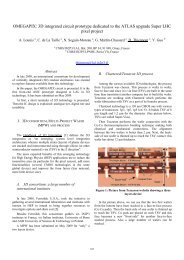
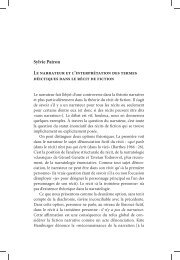
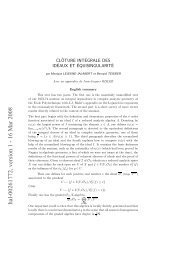
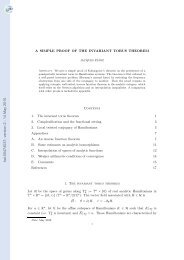

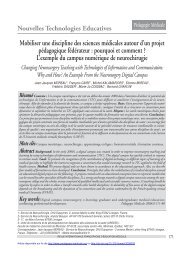

![[tel-00433556, v1] Relation entre Stress Oxydant et Homéostasie ...](https://img.yumpu.com/19233319/1/184x260/tel-00433556-v1-relation-entre-stress-oxydant-et-homeostasie-.jpg?quality=85)